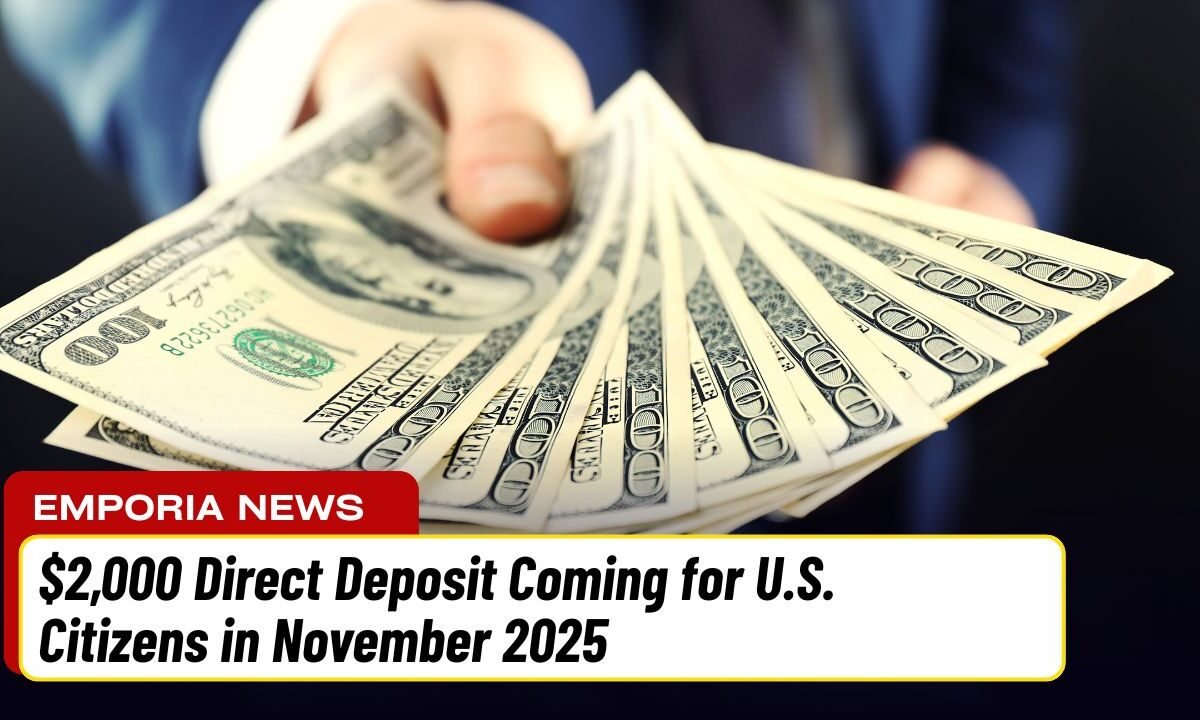A major financial update has arrived for millions of Americans. The U.S. government has officially confirmed $2,000 direct deposit payments scheduled through November 2025, offering meaningful financial support at a time when living costs continue to rise.
With families facing high food prices, increasing housing expenses, and persistent inflation, this relief initiative aims to ease economic pressure for eligible citizens.
The Internal Revenue Service (IRS) has published updated guidance explaining payment timelines, eligibility rules, and important steps individuals must take to avoid delays.
Below is a complete breakdown of everything you need to know about the upcoming $2,000 direct deposit payment, including qualification rules, payment dates, and how to ensure your deposit is processed on time.
Understanding the $2,000 Direct Deposit Program
What This Payment Represents
The $2,000 direct deposit forms part of a broader federal relief effort designed to support Americans dealing with financial strain caused by inflation, employment instability, and rising daily expenses.
While it is not officially labeled a stimulus check, the purpose is similar—providing one-time financial assistance directly into the bank accounts of eligible individuals and households.
Groups expected to benefit the most include:
- Retirees living on fixed incomes
- Low- and middle-income families
- Veterans
- Social Security (SSI/SSDI) beneficiaries
This new round of relief continues the government’s ongoing effort to provide support where it is needed most.
Eligibility Requirements for the $2,000 Payment
Who Qualifies?
Eligibility for the $2,000 relief payment is determined mainly by income level, tax filing status, and citizenship. According to the latest IRS guidelines:
- Single filers earning $75,000 or less will receive the full payment.
- Married couples filing jointly with incomes up to $150,000 qualify for the full amount.
- Heads of household earning $112,500 or less also receive the full payment.
Those earning above these thresholds may qualify for a reduced benefit, as the payment gradually phases out.
Groups Receiving Automatic Payments
The IRS has confirmed that several categories will receive the payment without filing additional applications, including:
- SSI and SSDI beneficiaries
- Veterans Affairs (VA) recipients
- Low-income individuals enrolled in federal assistance programs such as SNAP
All recipients must hold a valid SSN or ITIN and be U.S. citizens or lawful permanent residents.
Payment Schedule for November 2025
When Payments Will Be Delivered
The IRS has announced a structured delivery timeline for the November 2025 payment rollout:
- Direct Deposits:
November 15 – November 29, 2025 - Paper Checks (for those without direct deposit):
Starting November 25, 2025 - Federal Program Recipients (SSA/VA):
Payments may arrive slightly earlier, depending on the regular distribution cycle.
To prevent delays, recipients should verify their banking details and mailing address with the IRS or Social Security Administration well in advance.
Steps to Ensure You Receive Your $2,000 Payment
To guarantee timely processing, the IRS will rely on tax information from 2023 or 2024. If your information is not updated, you may risk missing your payment.
What You Should Do
- Submit your most recent tax return, even if your income is low.
- When available, update bank details using the IRS “Get My Payment” tool.
- Confirm your eligibility on the official IRS portal once updated information is released.
- Beware of scams—the IRS never asks for personal information via text, email, or phone.
Why This $2,000 Relief Payment Matters
For millions facing financial hardship, the $2,000 payment provides much-needed breathing room. With inflation still squeezing budgets, the payment will help cover:
- Rent and utilities
- Grocery bills
- Medical expenses
- Transportation costs
Coming just before the holiday season, this relief is expected to ease household stress and boost spending in local communities. According to economists, targeted financial assistance like this can help stabilize consumer confidence and support broader economic recovery heading into 2026.
Key Takeaways
- Payment Amount: $2,000 one-time relief
- Distribution Method: Direct deposit or paper check
- Payment Window: November 15–29, 2025
- Eligibility: Income-based, citizenship, and updated IRS records
- Program Administrator: Internal Revenue Service (IRS)
The upcoming $2,000 direct deposit in November 2025 is one of the most significant relief measures introduced in recent years.
It reflects the government’s ongoing commitment to supporting citizens during unpredictable economic times.
For families struggling with rising costs, this payment represents not just financial assistance—but reassurance, stability, and hope.
By ensuring your tax information and banking details are current, you can be among the millions who receive this essential financial support on time.
FAQs
Do I need to apply for the $2,000 direct deposit?
No. Most eligible individuals—especially SSI, SSDI, VA, and low-income beneficiaries—will receive the payment automatically based on IRS records.
What if I recently changed my bank account?
You must update your direct deposit information with the IRS as soon as the portal opens to avoid delays or returned payments.
Will non-filers receive the payment?
Yes, but only if the IRS has current information through past filings or federal benefit programs. Non-filers may need to submit updated details if requested by the IRS.




